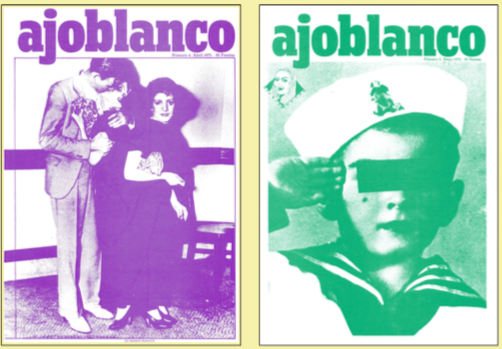The graphics of (counter)culture. A visual essay
DOI:
https://doi.org/10.46516/inmaterial.v8.108Keywords:
counterculture, alternative publishing, cover, history, comixAbstract
Can the covers of magazines and publications explain a world? A time? A culture? A country? By visiting libraries, archives and newspaper archives we can find out many things about our past, reconstruct history, our history.
In times, ours, when we are subject to the dominance of the image through screens and devices of all kinds, this visual essay tries to tell a story from the covers, headers, illustrations and photographs of some of the magazines and publications that defined a specific period in the history of Spain, which has come to be called transition. For me, a history of (counter)culture, with two notable examples, Star and Ajoblanco.
Star (1974-1980) was a personal project of Juan José Fernández that began its jour- ney as a comix magazine –85% of the content was dedicated to this– and it ended up being a countercultural magazine that, in its last issue, number 57, dedicated only 20% of its content to comix. With a punk and apolitical spirit, the authentic under- ground magazine of the counterculture, with an impact in the main cities of the country.
Ajoblanco (1974-1980 / 1987-1999) was a collective project initiated by Pepe Ribas, Toni Puig and Fernando Mir. The publication brought together philosophers, poets, architects and artists with political and social content of libertarian and anarchist ideology. The countercultural magazine par excellence, which influenced the develo- pment of young Spaniards both in large cities and in towns and villages throughout the country.
Not forgetting other alternative proposals with limited distribution, a short life or specific interests such as Ozono, Nueva Lente, La Luna de Madrid, Barcelona, Under- guía, the publications of the Aiguadevidre collective, Alfalfa, Bang, Nosotros Somos Los Muertos (NSLM), Disco Expres, El Vibora, Madrid Me Mata, Sal Comun or un- derboletin Eina.
Downloads

Published
How to Cite
Issue
Section
License
Copyright (c) 2023 Jaume Pujagut

This work is licensed under a Creative Commons Attribution-ShareAlike 4.0 International License.






